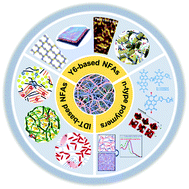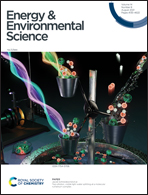Progress and prospects of the morphology of non-fullerene acceptor based high-efficiency organic solar cells
Abstract
With the development of non-fullerene acceptors (NFAs), the power conversion efficiency (PCE) of organic solar cells (OSCs) has been continuously improved and has exceeded 18%. A critical step to realize high-efficiency devices is to control the complex non-equilibrium morphology of the photoactive layer, to match the domain sizes with excitons, carriers, and other photoelectron physical kinetics, and to suppress the loss channels. Multiple factors affect the blended film morphology, which is in close relation to the physical and chemical properties of the donor/acceptor materials and the film-forming conditions that provide leverage for morphology optimization. This article reviews the important morphological characteristics and recent research progress of NFA-based OSCs, including indacenodithiophene (IDT)- and Y6-based π-conjugated molecular systems and n-type π-conjugated polymers, and discusses the effects of material miscibility, crystallinity, chemical structure, blending strategy, and processing conditions on the film morphology. The recently emerged high performance Y6-based NFAs are paid special attention, and the structure–property relationship has been constructed from the perspective of the crystal structure and phase separation. We wish that this short review can provide useful information and guidance for the morphology optimization of NFA-based OSCs, and wish that the discussion could help to resolve the morphological issues for new materials to achieve higher efficiency devices.



 Please wait while we load your content...
Please wait while we load your content...